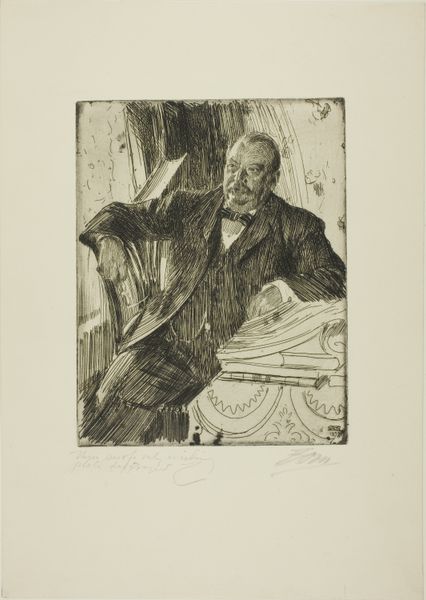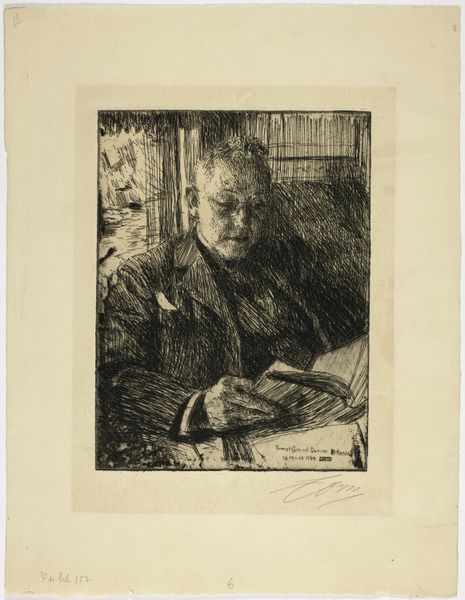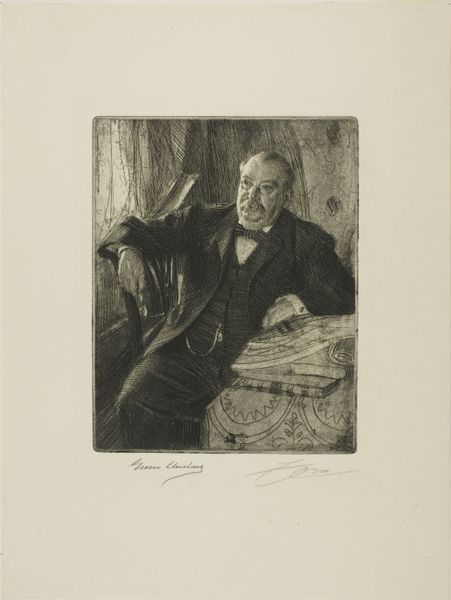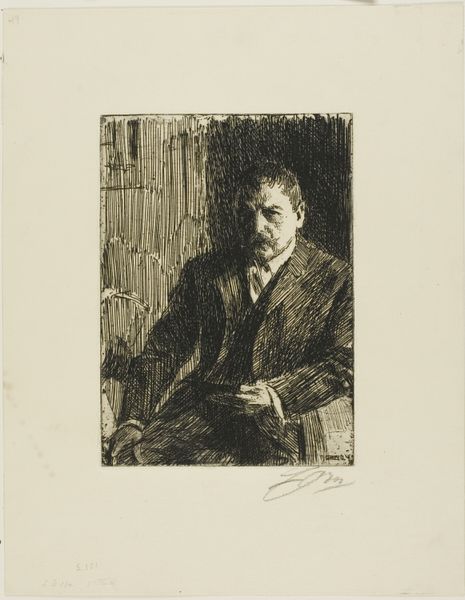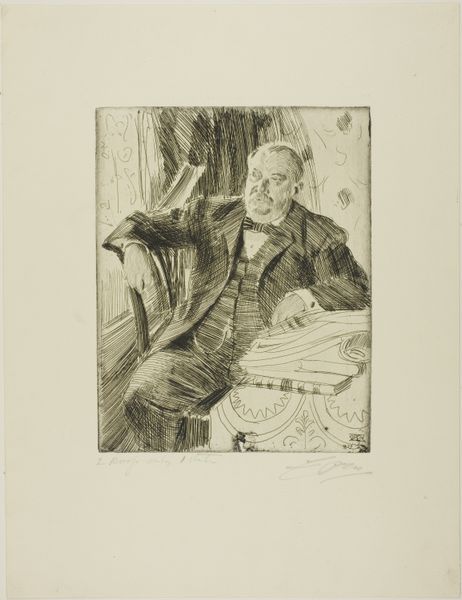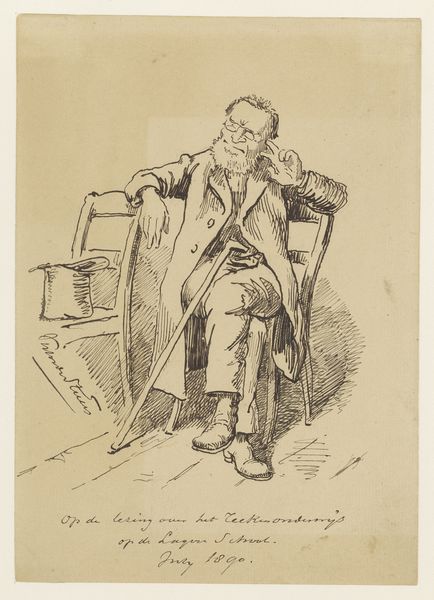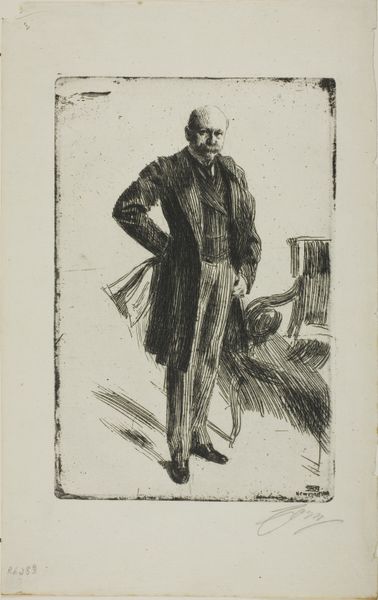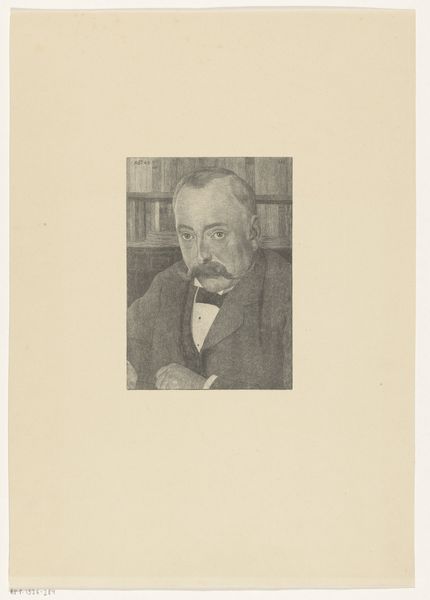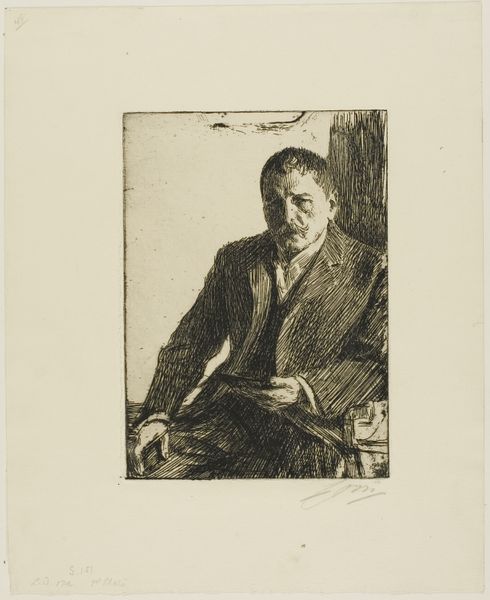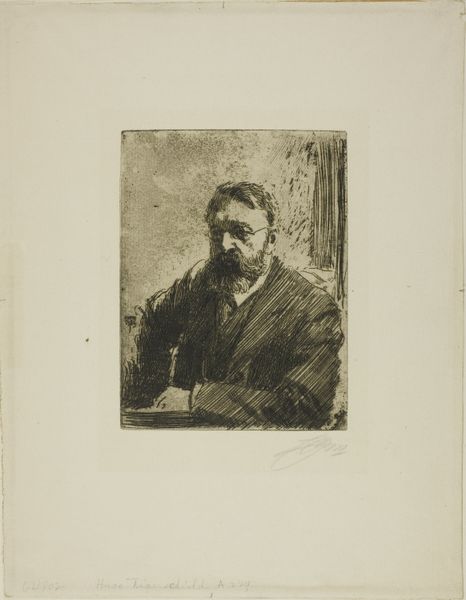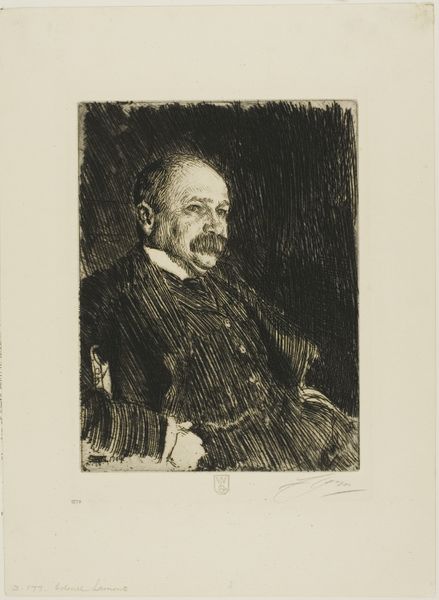
drawing, print, etching, paper
#
portrait
#
pencil drawn
#
drawing
# print
#
etching
#
paper
#
academic-art
#
realism
Dimensions: 224 × 175 mm (image/plate); 304 × 249 mm (sheet)
Copyright: Public Domain
Editor: Here we have Anders Zorn’s etching, "Grover Cleveland II," from 1899, rendered on paper. It feels both intimate and imposing; there's this sense of immediacy from the etched lines, yet the subject has this weighty presence. How would you interpret Zorn's approach here, particularly given its material form? Curator: It’s crucial to recognize etching as a reproductive medium, allowing for wider circulation of this elite image. Think about the labor involved: the artist, the printer, and then the distribution channels. This portrait isn't just about likeness; it's about manufacturing and consuming an image of power. How does the relative accessibility of an etching, compared to, say, an oil painting, impact your understanding of its purpose? Editor: That’s a compelling point. I hadn't considered the distributive power inherent in the medium. It does shift my perspective. It is less about showcasing artistry and more about reaching many people through printing process. I would love to hear more of your thinking around the relationship between social class and media production! Curator: Precisely. Look at the sharp, economical lines that define Cleveland's features and attire. This economy in production speaks to the intended audience; a print could be consumed by a far wider group of people than would have commissioned such an artwork in oils. Does it change your impression of this man to consider him a piece of commodified art? Editor: Absolutely, I feel like it makes me question who it was for. Who bought this and put it on their walls? Curator: Indeed! Editor: I see, so it is as much about the portrayal of the subject as it is about the conditions that allowed the picture to be replicated. It has broadened my appreciation for the work, not just as art but as cultural manufacture! Curator: Exactly. The network of production gives new meaning to the final image.
Comments
No comments
Be the first to comment and join the conversation on the ultimate creative platform.
